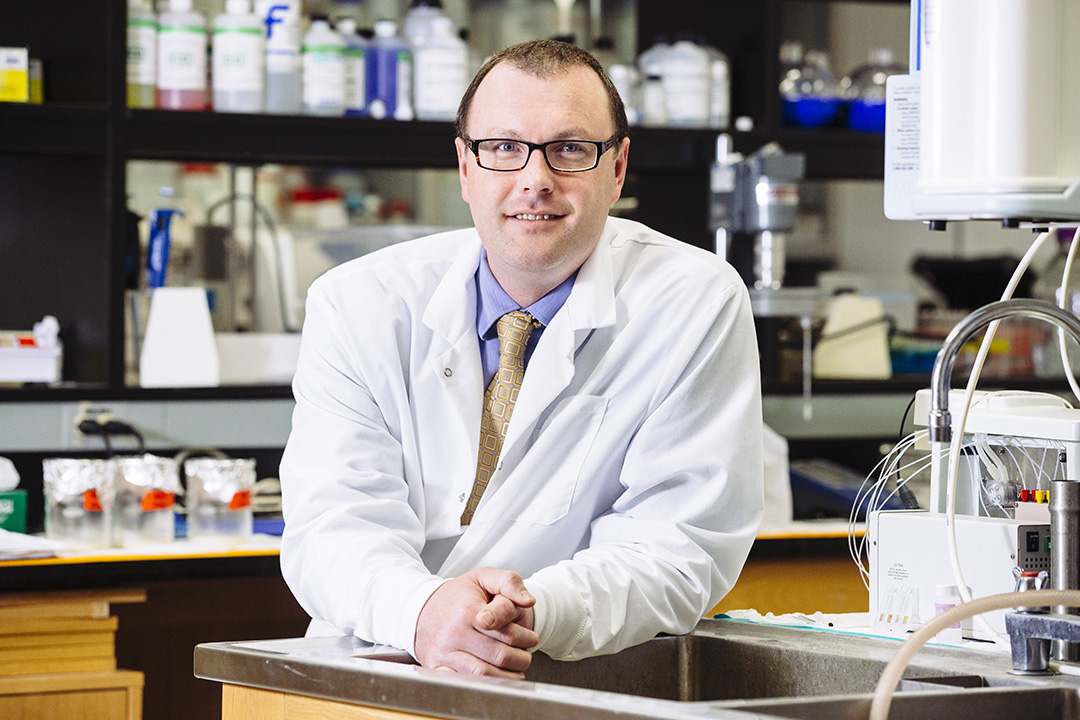
USask-led group awarded $1.65 M to train young scientists for expanding plant protein industry
An interdisciplinary university group led by University of Saskatchewan researcher Michael Nickerson has been awarded $1.65 million by the federal granting council NSERC to train a new generation of innovative plant protein scientists to help industry satisfy the exploding worldwide demand for meat alternatives.
By USask Research Profile and Impact“This major public investment in research and training presents a novel and exciting opportunity to leverage our university’s expertise and investment in both agricultural research and agri-food and bioproduct development for a sustainable future,” said USask Vice-President Research Karen Chad.
“By working across disciplines and institutions, and engaging with industry, this innovative project will provide young scientists with strong technical and leadership skills to advance the expanding protein ingredient industry,” she said.
Nickerson said global demand for plant protein ingredients is expanding due to population growth, the high cost of animal-derived proteins, and a large group of consumers who’ve chosen a “flexitarian” diet—mostly vegetarian and meat only occasionally—for ethical and health reasons.
“This project is a huge opportunity for students, who will acquire the skills needed for a rapidly growing plant protein ingredients industry that needs graduates who can hit the ground running,” said Nickerson, a professor of food and bioproduct sciences at the USask College of Agriculture and Bioresources.
“By incorporating four-month industry internships into the program, we will train scientists who will have a blend of leadership, science training and human dynamics, and an understanding of what issues really impact the development of the protein ingredient industry.”
NSERC’s six-year Collaborative Research and Training (CREATE) award includes eight co-applicants and 12 collaborators. The project, called Canadian Agri-food Protein Training, Utilization and Research Enhancement (CAPTURE), includes scientists from USask, University of Manitoba and University of Alberta, and aims to train 71 highly qualified personnel—10 PhDs, 44 master’s students and 17 undergraduates. Including cash and in-kind support from the institutions, government, and industry partners, the investment totals $4 million.
“In addition to plant proteins having huge implications for the health of Canadians, there will be considerable economic and social benefits to Canada as we diversify ingredients and foster innovations in the food industry,” Nickerson said.
Efforts of Prairie governments to build a strong value-added plant-ingredient processing sector have been effective, said Nickerson who holds a Saskatchewan Ministry of Agriculture Strategic Research Chair in Protein Quality and Utilization.
“There’s a huge wave of industry investment happening across the Prairies, whether it’s Roquette building a huge pea protein fractionating plant in Portage la Prairie, Verdient Foods investing in a plant in Vanscoy, or the involvement of big players like AGT Food and Ingredients,” he said.
As processing plants expand and more players come on stream, companies can’t find enough highly qualified personnel with not only technical and scientific knowledge, but soft skills such as leadership, project management, communications, and creative thinking, Nickerson said.
Trainees will focus on five key research areas:
- Improving the quality of protein feedstocks;
- Developing innovative dry and wet fractionation (separating crop seeds into protein, starch and fibre components);
- Improving the properties of plant proteins to create new uses or increase nutritional quality;
- Developing value-added applications;
- Examining supply chain and market development opportunities for plant protein ingredients and identifying barriers to moving new ingredients to market.
CAPTURE also will help develop a protein research network on the Prairies where the feedstock is grown, said Nickerson.
USask resources such as the Crop Development Centre and Global Institute for Food Security, and facilities such as KeyLeaf, Agriculture and Agri-Food Canada, and the National Research Council, make Saskatoon a great hub to build a protein network, he said. The group is also working with provincial food development centres and integrating with the industry-led Protein Industries Canada (PIC) supercluster.
“Building this protein network is really important because it will make us that much more ready for when the protein supercluster comes online, not only with our students but in research collaborations among the group’s industry interactions,” said Nickerson.
For more information, contact:
Jennifer Thoma
Media Relations Specialist
University of Saskatchewan
306-966-1851
jennifer.thoma@usask.ca

